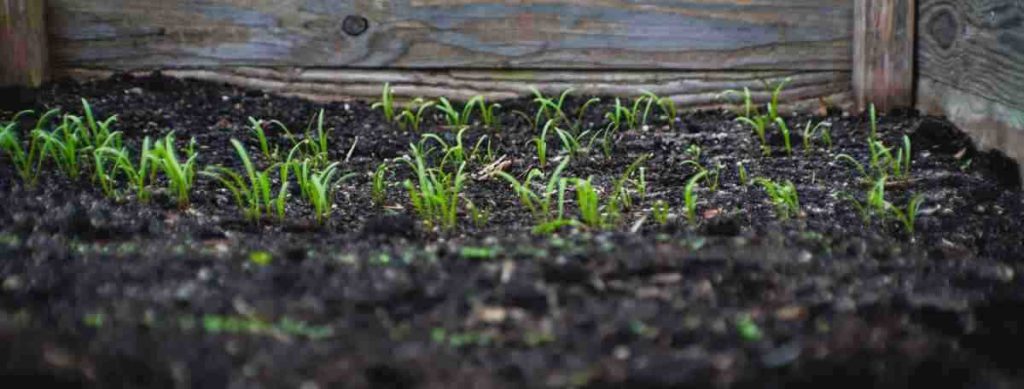Your cart is currently empty!
Get Event Reminders…
…twice a month by subscribing to our newsletter
Subscribe using the form in the page footer below.
Your cart is currently empty!
…twice a month by subscribing to our newsletter
Subscribe using the form in the page footer below.
Many factors affect how well a plant will grow. Everything from wind to soil nutrients will play a role. But it’s easy to overlook soil temperature. But this element will have an impact on how your plants will grow. Let’s take a closer look at soil temperature and why it’s so important for you to measure it.
The soil temperature is one of the most important environmental factors that affect the growth of your garden. During the day, the soil will store the heat. At night, it releases it into the atmosphere. As a result, the soil will play a crucial role in the development of all plant life.
There are dozens of elements that are affected by the soil temperature. For example, organisms like worms have an optimal temperature. If it gets too hot or cold they will die. This affects the amount of nutrients that the garden will be receiving. This will affect how well the crop is growing.
Furthermore, the soil temperature has an impact on how the amount of moisture that it will be able to retain. It can also affect the way that oxygen moves to the root system. These elements, in turn, affect the way that the plants absorb nutrients.
Soil temperature also has an impact on seed germination. If the temperature isn’t right, the seed won’t germinate. Even if it does, the growth will likely be permanently stunted.

Now that we know why the soil temperature is so important, we can turn our attention to finding a way to measure it accurately. Thankfully, this is a fairly easy task. You’ll just need to get a soil thermometer. These should be sold at most hardware stores.
How deeply you’ll need to measure will depend on what you want to plant. If you are planting a seed, you’ll only need to measure the topsoil. In this case, you’ll need to make sure that you’re getting the first one to two inches. If you want to transplant an existing plant, you’ll need to look deeper. In this case, you’ll want to make sure that you’re taking a measurement that’s between four to six inches deep.
It’s also important to consider when you are going to measure the temperature. Ideally, you will be doing this at night and during the middle of the day. This tells you the temperature range. Though, heading out in the middle of the night isn’t appealing. Because of this, you will be able to do it in the early morning. Finally, make sure that you are doing this for at least three consecutive days. Then take an average.
The ideal soil temperature will depend on what you intend to plant. For example, some plants will do best when planted during the winter. They will thrive in the colder soil. Other varieties will require you to wait until the warmer spring weather rolls in before you start planting. Before you put the seeds in, you’ll need to make sure that you check the germination temperature.
To find the right temperature for your garden, you might need to do some research. The best temperature should be listed on the tag of your plant. If not, you will be able to find it with a simple online search. When doing this, don’t forget about the air temperature. Freezing winds can still impact the growth of the plant. Because of this, you might need to take some measures to protect your garden. For example, you might want to put up a tarp around the saplings.
If you have a compost pile, you’ll want to keep an eye on the temperature. Remember, if it gets too cold, the worms and other organisms that break down the fertilizer will start to die off. The ideal temperature for compost is between 130 to 150 degrees Fahrenheit.

Though the weather plays a big role in determining the soil temperature, it isn’t the only factor that plays a role. With a few tips, you’ll be able to take a more active role in managing the temperature of the soil.
One of the best ways to help keep the soil hot is by being careful about where you are planting your garden. You’ll need to choose a location that will get plenty of sunlight. Another good tip is to lay out some black tarping. This color will help you capture the heat from the sun’s rays.
Another good way to capture the heat from the sun is by using mulch. The denser material will stop the heat from leaving the soil at night. As a bonus, it will be able to provide nutrients to the soil.
You can also change the temperature by changing the type of soil you are putting in. For example, you can mix multiple types of soil. This will impact the way that they react to temperature changes.
Finally, you might want to try tilling the soil. This will raise the temperature. It will also improve drainage, making it easier for the plants to absorb the nutrients. If you have a smaller plot, hiring a tiller doesn’t make a lot of sense. Instead, you’ll need to do it by hand. The best way to do this is with a spading fork. If you want to know what you should be looking for when you are shopping for these, check out this spading fork guide.
A tomato, lettuce and vegetable germination chart can be found by clicking here
The soil temperature has a huge impact on everything from soil aeration to how healthy the worms are. If you don’t create the right conditions, you might find that their growth is permanently stunted. You’ll be able to use a thermometer to measure the temperature. This will tell you the right time to plant or when to start taking steps to warm the soil. Hopefully, you now have a better idea of how the soil temperature impacts your garden.

Apart from being our main writer, Nora also works for a number of gardening-related sites and magazines, sharing her experience as an owner of a small farm in North Carolina.
Logging in to comment gives you more features, but it is not required.
Here are 5 beautiful fall plants , in vibrant shades of yellow, orange, red, with late blooms providing pops of colour before the cold.
Landscape berms and mounds are an easy and attractive way to add interest to your yard and landscape. Building them isn’t complicated.
Look at combinations of plants, colours, textures to match or complement. Use combinations of primary colours; complementary colours; analogous colours
Grow Early Goldenrod, Solidago juncea, a resilient herbaceous perennial with bright yellow flowers. This adaptable wildflower of the Asteraceae family withstands poor, dry soils and full sun, and with minimal maintenance, can fill spaces with its profusion of flowers and slen,der shrub-like appearance. Learn when and how to care for it and how to distinguish it from its cousins!
Add Some Winter Protection & Variety to Your Garden: Try Microgreens! Make the most of your plants this winter. Try out the cool and unique flavor of microgreens. Check out this article to learn how to protect your plants with snow, add variety to your garden with seed catalogs, and cultivate microgreens to spice up your breakfast.
Discover the beautiful Bottle Gentian flower, with its dark blue closed petals that never open. Found in North America, this perennial will bloom in late summer and thrive with minimal care. Pollinated exclusively by bumblebees, it can handle cold weather and become a unique addition to any garden!
The impressive Asiatic Lily is relatively easy to grow. Here are tips to be successful in producing and maintaining gorgeous blooms.
Immerse yourself in the vibrant world of Art in the Garden at Kiwi Gardens. Marvel at moving sculptures, colorful glasswork, and stunning woodwork. Get inspired for your own garden and explore a wide variety of unique plants. Don't miss this amazing experience!
Spinosad organic pesticide is effective against many undesirable insects while having little impact on beneficial insects.
Get valuable insights on tick prevention, caring for viburnums, and transplanting herbs and vegetables in the warm spring weather. Don't miss out!
Feed them 1 pound of 10-10-10 per 100 sq ft. of garden s Reward yourself with luscious blackberries – plant a Blackberry bush! Perfect for limited space, 1 bush can produce 20 white flowers and a large crop of juicy, sweet-tasting blackberries in zones 5-8 with bright sun and well-drained soil. Care & feeding instructions included.
Learn sustainable mushroom cultivation. Along with their sustainability, numerous types of mushrooms are a nutritious food with decreased calories and no cholesterol or fat. Use these eco-friendly tips and start growing mushrooms today!
GardeningCalendar.ca gets some funding from advertisers. If you click on links and advertisements at no cost to you, the site may receive a small commission that helps fund its operation.
© 2024 J&S Calendars Ltd.